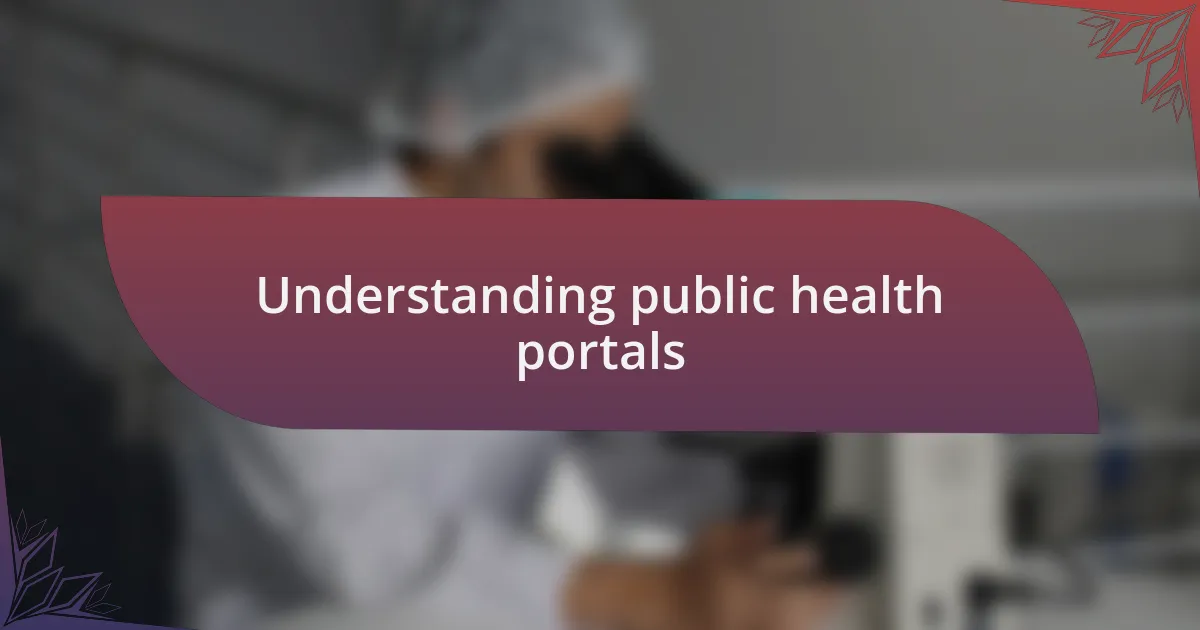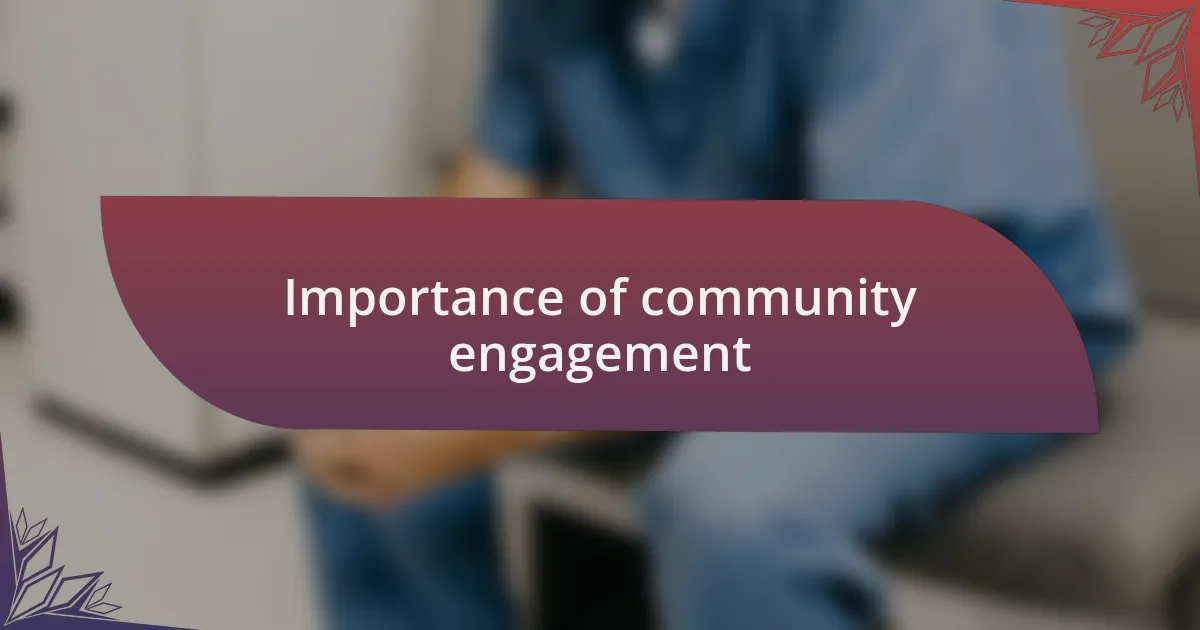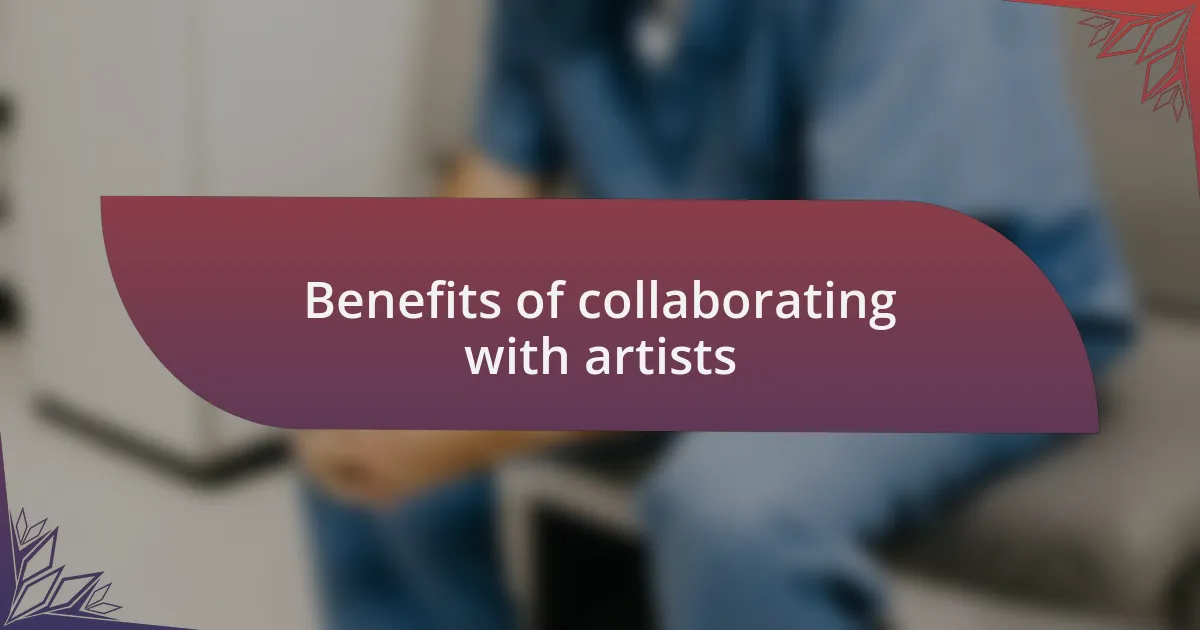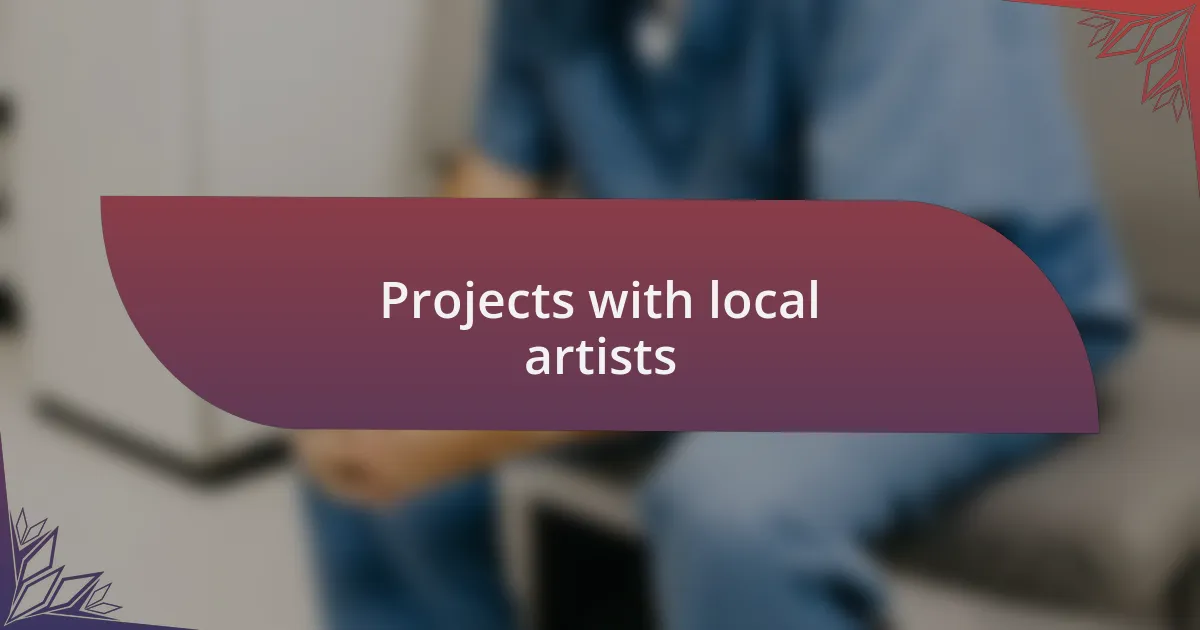Key takeaways:
- Public health portals provide accessible health information and promote community engagement.
- Collaborating with local artists enhances public health messaging, making it more relatable and engaging.
- Art-based initiatives foster emotional connections and encourage participation in health programs.
- Measuring the impact of artistic collaborations reveals both community engagement and emotional transformations.

Understanding public health portals
Public health portals serve as essential hubs for accessing vital health information and resources. I remember the first time I navigated through one; I was amazed at how user-friendly it was. These platforms can help demystify the often complex world of public health, allowing individuals to easily find information relevant to their needs. Isn’t it reassuring to know that a treasure trove of data is just a click away?
As I explored further, I discovered how these portals provide not only statistics but also educational resources tailored to specific communities. It struck me how they can truly empower individuals by promoting awareness and encouraging proactive health management. When was the last time you checked your local public health portal? I think many would be surprised by the wealth of information available to them.
Moreover, public health portals often facilitate communication between health officials and the community, making them a powerful tool for fostering trust and engagement. I once participated in an online forum through a public health portal, and I was truly impressed by how open the discussion was. The ability to ask questions and receive timely responses helped me feel more connected to the health narratives in my community. How often do we get that opportunity to engage directly with local experts? It’s something we should all take advantage of.

Importance of community engagement
Community engagement is crucial for fostering a sense of ownership and responsibility among individuals. I vividly remember attending a local health fair where artists showcased their work alongside health information booths. It was powerful to see how art can bridge gaps, making health topics relatable and engaging. Have you ever felt energized by creativity in a serious space? I have, and it sparked my curiosity about better health practices among attendees.
Moreover, engaging with local artists allows communities to leverage their unique cultural perspectives, enriching public health messages. I once watched a mural being painted in a neighborhood that addressed mental health awareness. The artist captured the essence of shared experiences that resonated deeply with the onlookers. Doesn’t it make you think about the impact of such visuals on people’s understanding of health? In that moment, it became clear to me that art can translate complex health issues into something tangible and approachable.
In my experience, the emotional connection engendered by community engagement can lead to increased participation in health initiatives. I recall when my neighborhood organized a community cleanup with a local artist designing promotional materials. The excitement in the air was palpable, and it dawned on me that when people feel involved, they’re more likely to take action. Isn’t that a beautiful reminder of how collaboration can enhance our dedication to public health?

Benefits of collaborating with artists
Collaborating with artists brings a fresh perspective to public health initiatives, making the information more vibrant and accessible. I remember when a local artist created a series of interactive sculptures that represented various health topics. Seeing families engage with these pieces sparked conversations about nutrition and physical wellness in a way that mere pamphlets never could. Have you ever noticed how a visual cue can stick in your mind longer than a printed fact?
Art can also dismantle barriers that individuals might feel toward participating in health programs. At one health workshop I attended, an artist led a mural painting session where attendees expressed their health journeys. The openness and vulnerability shared in that space transformed the atmosphere; it created a safe haven for dialogue about issues that many felt uncomfortable discussing. Isn’t it fascinating how creativity can heal?
Additionally, the emotional impact of art fosters community bonding. When I volunteered to help set up an exhibit showcasing local artists’ work related to health, I saw the way people connected over shared experiences reflected in the art. It reminded me that public health isn’t just about statistics; it’s about real lives and stories. Don’t you think that tapping into our collective emotions could drive more meaningful engagement in health initiatives?

Finding local artists for partnerships
Finding local artists for partnerships can sometimes feel daunting, but I’ve found that the best approach is to immerse yourself in local art scenes. Attending community art shows, galleries, and open mic nights is not only enjoyable but also a strategic way to meet artists who are passionate about their work. I recall one evening at an art fair where I struck up a conversation with a painter who had created vibrant health-themed artwork; that casual chat led to a collaboration that transformed a public health event.
Networking with local art organizations and community centers can also provide valuable connections. I once reached out to a local arts council, and they introduced me to a diverse group of artists who were eager to collaborate on health initiatives. It struck me how artists often view their communities through a different lens, opening new avenues for addressing public health messages. Have you ever considered how engaging with these organizations could amplify the impact of your health programs?
Moreover, social media is a powerful tool for discovery and outreach. I often scroll through platforms like Instagram to find local artists who align with specific health themes I want to communicate. One artist I connected with had an impressive following and a unique ability to blend art with advocacy. Isn’t it exciting to think about how digital spaces can bridge gaps and create partnerships that resonate with the community?

Approaches to engage local artists
Connecting with local artists can truly enhance public health initiatives, and one effective approach is through collaborative workshops. I organized a series of art-infused health workshops in my community, inviting artists to facilitate sessions where participants created art around health topics. It was fascinating to see how much deeper the conversations went when creativity was part of the mix; it made health topics feel more approachable. Have you ever witnessed how art can spark dialogue in unexpected ways?
Another valuable method is hosting community events centered on art and health. I remember coordinating an art exhibit that highlighted local artists whose work focused on mental health themes. The turnout was incredible, and attendees shared their stories and struggles, fostering a sense of community and support that was palpable. It struck me that when art serves as a platform for shared experiences, it can motivate individuals to engage with their health more actively.
Lastly, consider engaging local artists in public health messaging campaigns. I teamed up with a talented muralist who transformed a blank wall in our local park into a vibrant mural promoting physical activity. Watching families stop, admire, and discuss the artwork demonstrated how visual storytelling can make health messages more accessible and memorable. How do you think art can reshape the way we communicate important health information?

Projects with local artists
One memorable project involved collaborating with local artists to create a community garden installation that doubled as an art piece. As we painted the garden beds with vibrant colors and uplifting messages related to nutrition, I noticed how engaged everyone became. Children pitched in, laughing and joking while learning about the importance of healthy eating—a powerful reminder that art can be a playful entrance into meaningful discussions.
Another impactful initiative was a storytelling mural project, where artists invited community members to share their personal health journeys. I vividly recall the day we unveiled the mural; it was a celebration of vulnerability and resilience. This experience made me realize how sharing stories through art can foster a sense of belonging, encouraging others to voice their own experiences. Isn’t it fascinating how art can unite us in our struggles and triumphs alike?
I also explored community art workshops focused on stress reduction techniques, where local artists guided participants in creating their own stress-relief art. The atmosphere was filled with laughter and quiet reflection, as attendees shared their thoughts on how art helps them process emotions. It occurred to me that engaging artists in this context not only nurtures creativity but also serves as a valuable resource for mental well-being. How often do we overlook art as a tool for emotional clarity?

Measuring the impact of collaborations
Evaluating the impact of our collaborations with local artists has been an enlightening journey. For instance, after the storytelling mural project, I conducted informal interviews with several participants. Their heartfelt reflections revealed that sharing their stories not only empowered them but also sparked deeper conversations around health issues in the community. Isn’t it incredible how creative expressions can catalyze change?
Quantifying the success of these initiatives often boils down to observable changes in community engagement. During the community garden installation, I noticed how foot traffic in the area surged. People who previously passed by now stopped to appreciate both the art and the messages intertwined with their surroundings. This makes me wonder—do we sometimes underestimate the ripple effect of engaging art in public spaces?
An unexpected benefit of our collaborations was the lasting sense of community they fostered. In subsequent follow-up gatherings, many participants reported feeling more connected and supported, attributing this to the relationships formed during our artistic endeavors. It’s clear to me that measuring impact goes beyond numbers—it encompasses the emotional and social transformations that art can inspire. How can we ever fully capture the depth of these connections?